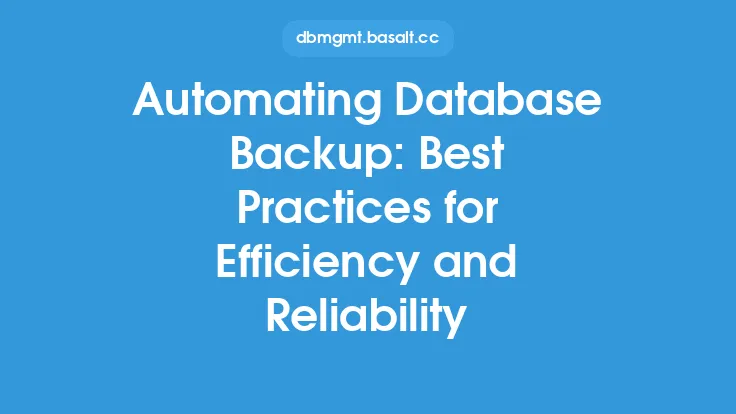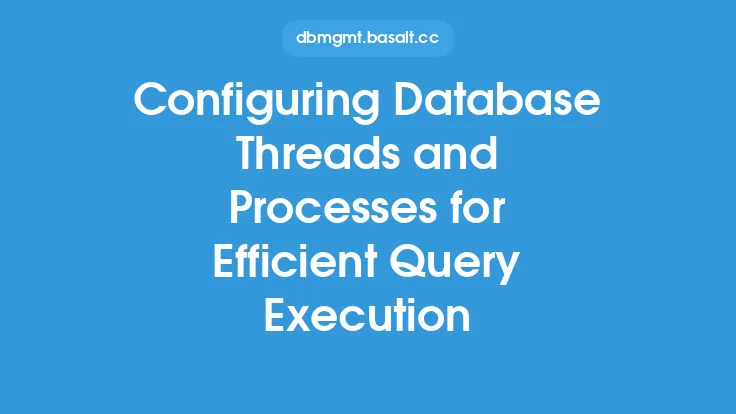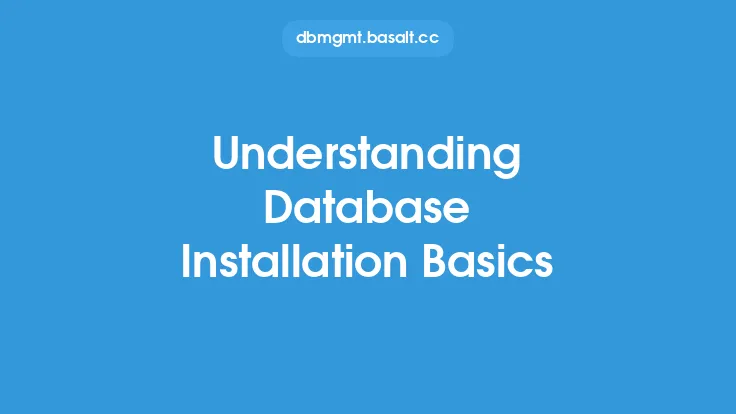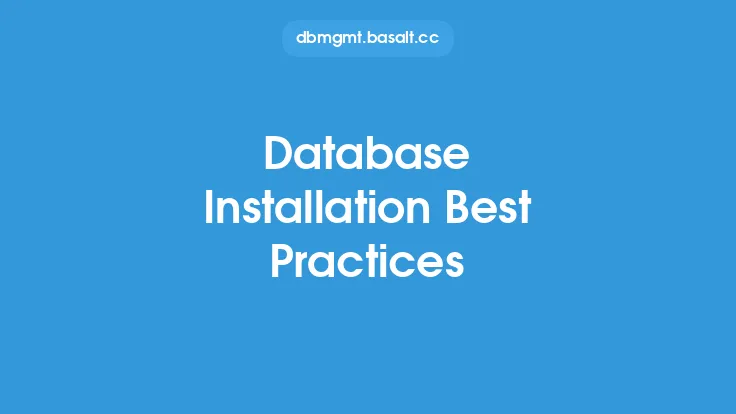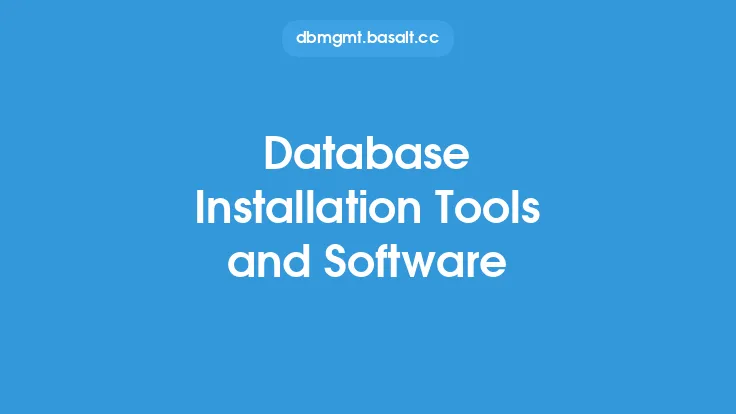Automating database installation processes is a crucial step in streamlining the deployment of databases, especially in large-scale environments where manual installation can be time-consuming and prone to errors. Database automation involves using scripts, tools, and software to automate the installation, configuration, and deployment of databases, reducing the need for manual intervention and minimizing the risk of human error.
Introduction to Database Automation
Database automation is a broad term that encompasses a range of techniques and tools used to automate various aspects of database management, including installation, configuration, backup, and recovery. Automating database installation processes is a key aspect of database automation, as it enables organizations to quickly and efficiently deploy databases, reducing the time and effort required to get up and running. By automating database installation, organizations can also ensure consistency and standardization across multiple databases, making it easier to manage and maintain them.
Benefits of Automating Database Installation
Automating database installation processes offers several benefits, including increased efficiency, reduced errors, and improved consistency. By automating the installation process, organizations can reduce the time and effort required to deploy databases, freeing up IT staff to focus on more strategic tasks. Automated installation also reduces the risk of human error, which can lead to configuration issues, security vulnerabilities, and other problems. Additionally, automated installation ensures consistency and standardization across multiple databases, making it easier to manage and maintain them.
Tools and Techniques for Automating Database Installation
There are several tools and techniques available for automating database installation, including scripts, configuration management tools, and database automation software. Scripts, such as shell scripts or PowerShell scripts, can be used to automate the installation process by executing a series of commands and tasks in a specific order. Configuration management tools, such as Ansible or Puppet, can be used to automate the installation and configuration of databases, as well as other IT infrastructure components. Database automation software, such as Database Lifecycle Management (DLM) tools, can be used to automate the entire database lifecycle, including installation, configuration, backup, and recovery.
Database Installation Scripts
Database installation scripts are a common technique used to automate database installation. These scripts typically consist of a series of commands and tasks that are executed in a specific order to install and configure the database. Scripts can be written in a variety of languages, including shell scripts, PowerShell scripts, or SQL scripts. Database installation scripts can be used to automate tasks such as creating the database, configuring the database settings, and installing any required software or drivers. By using scripts to automate database installation, organizations can ensure consistency and standardization across multiple databases, reducing the risk of human error and configuration issues.
Configuration Management Tools
Configuration management tools are another technique used to automate database installation. These tools, such as Ansible or Puppet, allow organizations to define and manage the configuration of their IT infrastructure components, including databases. Configuration management tools use a declarative syntax to define the desired state of the infrastructure, and then automate the process of achieving that state. By using configuration management tools to automate database installation, organizations can ensure consistency and standardization across multiple databases, as well as other IT infrastructure components.
Database Automation Software
Database automation software, such as DLM tools, is a comprehensive solution for automating the entire database lifecycle, including installation, configuration, backup, and recovery. These tools provide a centralized platform for managing databases, allowing organizations to automate tasks such as database creation, configuration, and deployment. Database automation software also provides features such as version control, auditing, and reporting, making it easier to manage and maintain databases. By using database automation software to automate database installation, organizations can reduce the time and effort required to deploy databases, while also improving consistency and standardization.
Best Practices for Automating Database Installation
To get the most out of automating database installation, organizations should follow best practices such as testing and validating scripts and configurations, using version control to track changes, and implementing auditing and reporting to monitor database activity. Organizations should also ensure that automated installation processes are secure, by using techniques such as encryption and access control to protect sensitive data. By following these best practices, organizations can ensure that their automated database installation processes are reliable, efficient, and secure.
Common Challenges and Limitations
While automating database installation offers several benefits, there are also common challenges and limitations to consider. One of the main challenges is the complexity of database installation, which can make it difficult to automate. Additionally, automated installation processes may require significant upfront investment in scripting, configuration, and testing. Organizations may also face limitations such as compatibility issues with different database versions or platforms, or difficulties in integrating automated installation with existing IT infrastructure. By understanding these challenges and limitations, organizations can better plan and implement automated database installation processes.
Future of Database Automation
The future of database automation is likely to involve increased use of artificial intelligence and machine learning to automate database management tasks, including installation, configuration, and deployment. Additionally, the use of cloud-based databases and containerization is likely to become more prevalent, making it easier to automate database installation and management. As database automation continues to evolve, organizations can expect to see improved efficiency, reduced errors, and increased consistency in their database deployments. By staying up-to-date with the latest trends and technologies in database automation, organizations can ensure that their database installations are optimized for performance, security, and reliability.
